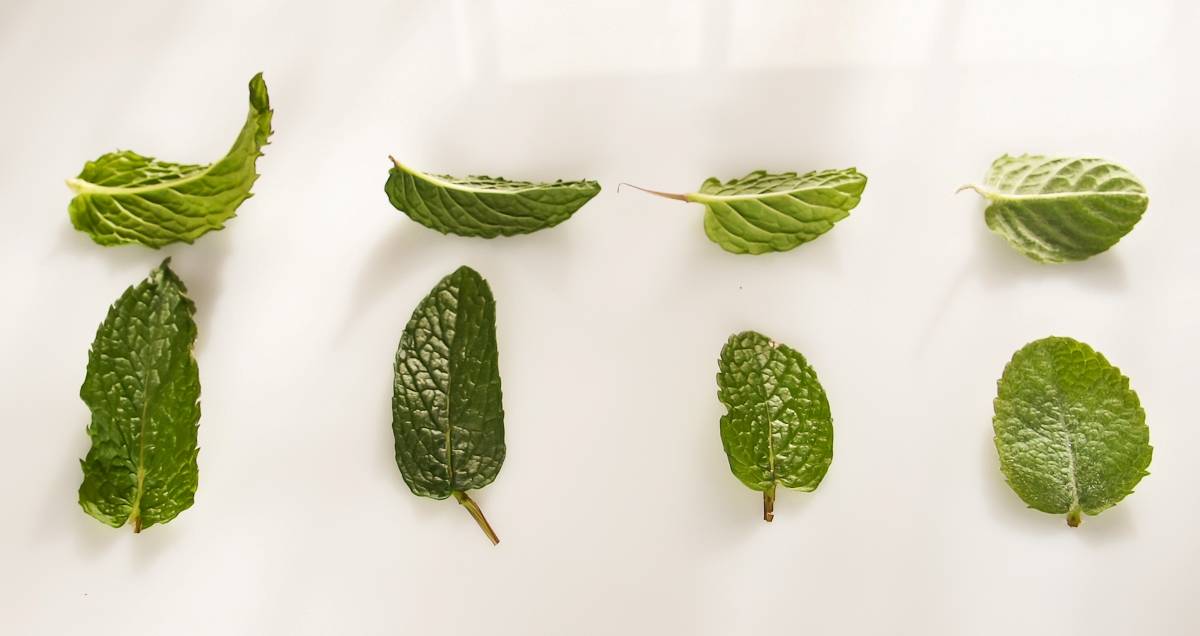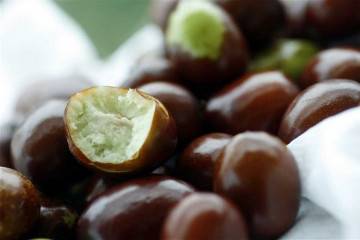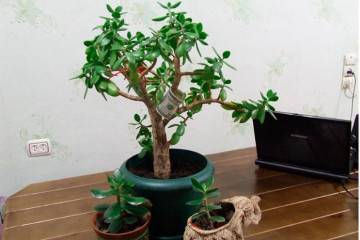How to plant mint in the country - how it multiplies
Content:
Mint is a popular herb. Many people like cocktails, desserts or teas with a pleasant cooling flavor. This perennial crop with a strong root system is resistant to cold, so it can be grown in the vegetable garden or in the garden. It is so unpretentious and fruitful that every housewife should know how to plant mint in the country, grow in a garden with medicinal herbs, in a garden or a windowsill.
Popular varieties for growing in the country
There are over 40 varieties of mint. And each of them is characterized by a pleasant aroma. The varieties differ in chemical composition. But menthol is common to most varieties.
The most common varieties:
- peppery;
- fragrant;
- green;
- field;
- meadow;
- swamp;
- water;
- long-leaved;
- small-colored;
- spicate.
Peppermint is one of the most popular varieties. Long branches (up to 1.4 m), lush bushes, emerald-colored leaves with neat jags. The plant blooms for 3 months, starting in July.
There are two varieties, black and white. In the dark variety, the aroma is sharper and stronger, while in the light variety, the composition is richer and brighter.
Curly mint owes its name to slightly curled leaves. A tall plant up to 1 m in length. The aroma is pleasant, but not very pronounced.
Chocolate mint stands out not only with its unusual aroma (menthol, lemon plus chocolate), but also with complex colored leaves (dark green with a crimson tint). There are varieties of this culture in which a fruity smell predominates (lemon, banana, pineapple, strawberry, and others).
Mexican mint has a pleasant spicy aroma. The plant grows up to 1.5 m in length.
How to choose quality planting material
Although mint grows very well, propagation can be tricky. Planting material should be carefully selected by learning how to grow mint.
Selection of seeds for planting
Only an experienced and patient gardener knows how to grow mint from seeds. Seeds need to be taken in specialized stores, this is the only way to buy a pure variety that will give great germination.
How to choose mint seedlings
To obtain a varietal plant, you should buy seedlings from a specialized store or take part of the mother plant.
Seedlings should be strong, with bright, succulent leaves and a firm stem. The root is strong, well defined, without dry or rotten areas. For the plant to take root, samples should be taken no longer than 8 cm.
Too long, pale and elongated shoots are difficult to adapt after transplanting. Purchased seedlings must be transferred to the garden along with the handful of land in which they were sold.
Planting mint in the country in open ground
The easiest thing for mint is to plant and care in the open field.Seedlings are planted to a depth of 5 cm, between the plants there should be 15-30 cm.
When can you plant, timing
It is better to plant plants in the soil in spring, with the onset of a frost-free period, when the soil temperature is above 10 ° C - they will take root well, they will easily tolerate small frosts.
In the summer, you should be careful when choosing the time to plant mint - it is difficult for seedlings to root under the scorching rays. Theoretically, the culture can be propagated until August, without forgetting to water new plantings.
In autumn, it is undesirable to plant seedlings, because poorly fortified plants may not tolerate a cold snap or the first frost. Experienced gardeners know how to plant mint, if the autumn is warm, it should be closed at night and covered with sawdust with frost.
Where is it better to plant, how to choose a place, in the sun or in the shade
If you choose conditions, then you need to select an area where there is enough sun during the day. The soil is needed with a neutral pH or slightly acidified. The land is not depleted, moist, weed-free, with good drainage. It will not hurt to feed the site with special preparations, fertilizers for the grass.
Having chosen a place, it is better to immediately make limiters from slate, metal or plastic strips. The material must be buried around the perimeter of the area where the mint can grow.
What conditions do mint need for successful growth?
To grow a crop, you need a warm and sunny place. Severe drought or waterlogging negatively affects most varieties of the Lamiaceae family, which include mint. It is best to have periods of sunshine (at least 4 hours) and partial shade during the day.
In the snowless winter, freezing of plants is possible. But covering the plantings with fallen leaves, sawdust or peat with a layer of 10-20 cm will protect against any frost.
There are almost no differences between how mint grows in the garden and on the windowsill. The only caveat is that the leaves should be removed from the glass. If representatives of the Lamiaceae family are bred on the windowsill, then windows that face either side, except for the north and west, are suitable.
The main condition for success is maintaining the desired temperature, since at night it will pull cold from the window, and during the day it will fry the sun.
Plant care
Mint in the beds is watered daily, after sunset, in the morning the crust on the ground is broken with a rake. The soil is fertilized in the spring, and in the fall, during the digging of the soil, rotted manure and ash are added. Add 0.5 kg of ash and 100 g of fertilizer with potassium to a bucket of compost. This mixture is sufficient to improve 1 m² of land of any type.
For successful cultivation in an apartment, mint needs to be bathed daily, pouring from the shower. It is convenient to do this in the bathroom or sink. Top dressing is recommended monthly, especially if the plant is constantly pruned.
The tips should be trimmed to form a mint bush. This procedure activates the formation of lateral branches, leaves, allows you to make the bushes more luxuriant, and increases the yield. The buds must be trimmed before the mint blooms. Most varieties bloom for 3-4 months, from the beginning of summer.
So that the plant does not suffer from a lack of space, remains as strong and fragrant, every 2-4 years you need to divide the bush, throwing out excess parts or planting them.
How mint multiplies
There are several ways to grow mint:
- With the help of seeds.
- Seedlings.
- Vegetative division (by cuttings, dividing the bush, rhizomes).
Mint is a very tenacious plant, so it is quite easy to get new plantings.
Seed method
It is difficult to plant mint seeds with seeds due to the following problems:
- poor germination;
- not suitable for hybrid varieties;
- 3 transplants will be needed.
It is recommended to use an enriched soil composition: for 2 kg of soil, 1 kg of sand and compost each. Before sowing mint, the seed is soaked for 30 minutes in a slightly pink solution of potassium permanganate (a pinch the size of a poppy seed is diluted in 1 liter of boiled warm water), and then dried on paper for several hours.
Seeds for germination are sown in trays in moistened soil, to a depth of 0.5 cm. Leaving the seeds to germinate, the trays are covered with plastic wrap for 2 weeks to maintain a temperature of 22 ± 2 ° C.
Sprouted seeds are transferred to pots, 8 cm high, and left for the transition period in a cool place. When the seedlings stabilize, it takes 7-10 days, they can be transplanted into open soil in a vegetable garden or a garden bed on a windowsill.
Vegetative propagation
Mint bushes can be propagated by vegetative division, when a part is separated from the mother plant, and after preparation is planted in the soil. You can separate cuttings, shoots from the bush, divide the bush into several smaller seedlings, separate part of the rhizome.
The bush is chosen at least 2 years old. It needs to be dug out, cleaned of damp earth and slightly dried. Then divide into several parts, each of them will become a full-fledged plant.
For propagation by cuttings, they look at which bush with thick elastic stems. In order for the sprout to start quickly, you should take a branch about 10 cm long with nodules and leaves. Cut at a distance of 1 cm from the root, put in water. In a couple of days, the rudiments of future roots will appear, they will look like white threads. When the length of the roots is more than 1 cm, the cutting can be transplanted into the ground.
You can soak the cuttings for half an hour in growth stimulants and immediately plant them in the prepared substrate. Take care as usual - spray, put in a sunny place, in the hottest time - in partial shade. Within a month, new leaves will appear, which will mean successful rooting of the cuttings.
Propagating by rhizome, you should cut the root with nodules (from 10 on each segment). Each root is planted in prepared soil. It is buried by 5 centimeters, making an indent between them up to 30 cm, and the row spacing up to half a meter. It is useful to add a little compost or fertilizer to the holes of the planting material.
How to harvest mint
You can collect green mass constantly, as soon as the branches grow up to 20 cm. But the largest amount of essential oils is during the flowering period. Mint can be cut into twigs or only the leaves can be pinched.
For harvesting, the collected branches or leaves are washed with running water to remove dust and insects. Excess moisture is crushed, and the greens are laid out in a thin layer on paper or on a surface with ventilation (mesh, lattice). The raw materials are turned over every day to avoid overdrying the upper layer and mold in the lower layer.
Completely dry grass is placed in dry, sealed containers made of glass, plastic or in bags made of natural fabric.Store the workpiece in a dark and dry place.
Problems of growing mint in the garden, diseases and pests
To keep the plant healthy, you should immediately cut out the parts affected by disease, pests and destroy. After all, spoiled areas, even after processing, are not suitable for food. Plus, pests can move to healthy parts, infecting the entire planting. Often the cause of mint disease is waterlogging and poor air circulation. Therefore, it is necessary to dig up the ground and not water for a while.
The appearance of pests is visible almost immediately - insects appear on the leaves, especially on the back side, the plant turns yellow, fades, and perforations appear. It can be spider mites, aphids, slugs, fleas, whiteflies, weevils, or leaf beetles. It is impossible to postpone the fight against them.
The flea is destroyed by Karbofosos. To do this, in the fall, the plant is cut almost to the ground, the affected parts are destroyed, and the bushes are treated with a chemical.
The leaf beetle appears if the soil is waterlogged, respectively, they allow the earth to dry out, then watering sparingly. The pest is removed by spraying the plants with soda or soapy water.
Crimson spots are characteristic of rust. Since the fight against this disease is ineffective, it is recommended to cut diseased plants and burn them. In the fall, after digging, the ground is sprayed with a solution of iodine or potassium permanganate.
White bloom appears when mint bushes are affected by powdery mildew. One of the reasons why the leaves turn white is the thickened planting. They cope well with the problem when spraying with a solution of colloidal sulfur.
Having learned how easy it is to breed and care for mint, every lover of mojito, mint tea or desserts with fragrant petals will be able to cultivate it at home. Spicy herb is used when serving meat and fish dishes. Delicious fruit salads with mint leaves are popular with many gourmets. It is also used in hot and cold refreshing drinks. Thanks to menthol, this culture is indispensable in folk medicine.
























